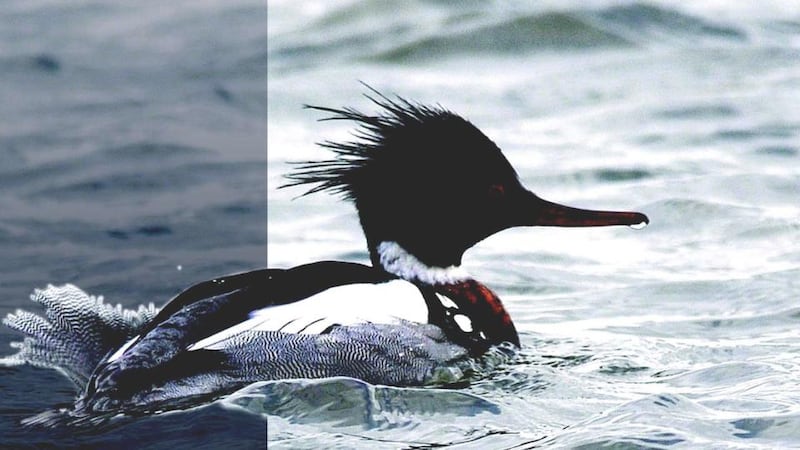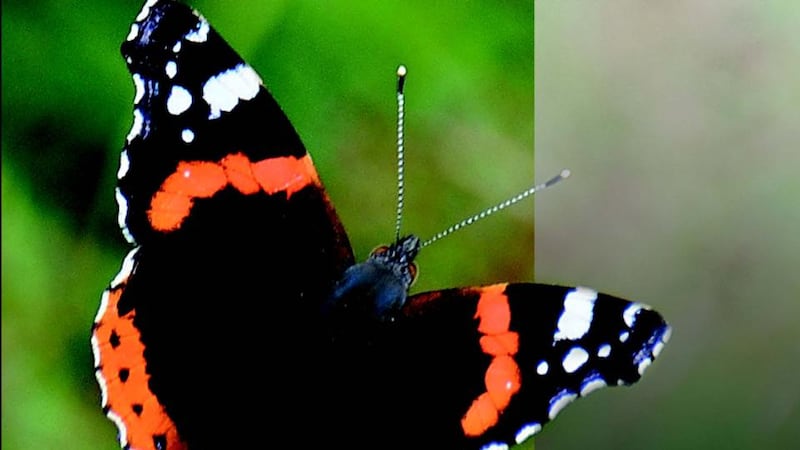We don’t usually view golf courses as outdoor spaces that celebrate nature in all its abundant wildness. Indeed many people view golf courses as unnaturally green, overly landscaped spaces which have replaced heathlands, parklands or farmland.
But a group of golfers in the north Dublin golf links at Portmarnock are keen to dispel any perception of golfers as not being nature lovers. These amateur naturalists – Vincent Sex, Pat Byrne and golf links manager, Gary Johnstone – have produced an impressive illustrated guide to the flora and fauna of Portmarnock Golf Club to celebrate the club's 125th anniversary in 2019.
One of the oldest golf clubs in Ireland, the land at Portmarnock was originally owned by the Jameson whiskey-making family.


"We were looking for a project," says Sex, who sees the publication as a new approach to recording the species in our leisure environments. The close-up photographs of birds, insects, animals, plants and funghi in the book were donated by local photographers. Illustrations of flowers including orchids by the well-known botanical artist, Susan Sex (Vincent's wife) are also included.
“We observed species as we played golf, and this is something that could be replicated by other golf clubs around Ireland,” says Sex. “We can co-exist well with nature,” adds Byrne. To manage the costs, 350 hardback books were pre-ordered at €40 each. These sales covered the printing of 1,700 copies. The softback copies are available for €20 each to club members, friends and the wider community.

Golf links (golf courses that link sea and land) such as that at Portmarnock have an interesting mix of habitats.
Portmarnock Golf Club is accessed via the golf links road, which also has a public car park to the east of the village and includes more than 200 hectares of land on a peninsula with the Irish Sea on one side and Baldoyle estuary on the other. It incorporates a special area of conservation (Baldoyle Bay) and a special protection area for birds, monitored by the National Parks and Wildlife Services.
“The estuary is important for migrating birds such as great crested grebes, egrets, curlews and sandpipers. We also see brent geese, terns and oystercatchers. Sometimes, we even get peregrine falcons feeding here,” says Sex.
Johnstone describes the different habitats on the 27-hole golf course as he takes me around the course on a golf buggy. “There is a salt marsh and mudflats, mobile and fixed dune belts, grassland, scrubland and some Monterey pine trees, which were introduced to prevent erosion,” he says.
Johnstone says some of the mown grass sections of the golf course can act as “environment corridors” that foxes, hares, short-eared owls and other animals can move freely across to get to the wilder areas on the golf links. He points to water holes on the course, the entirety of which is an aquifer between the estuary and the sea. Dragonflies and damselflies are often seen on the reed beds. Bird boxes and insect hotels have also been introduced in locations throughout the course.
Originally from Aberdeen in Scotland, Johnstone has been the links manager at Portmarnock for 11 years.
Most golf courses have an environmental policy now, but we have a specific obligation to look after the environment here
“Ireland, England and Scotland are famous the world over for their golf links, and Americans try to copy this type of course by introducing sand,” he explains. Other golf courses are usually constructed on parkland (with areas of woodland and grassland) or moorland or heath with bogs as part of the landscape.
Managing the wild areas of Portmarnock Golf Course is not without its challenges. Over the years, the tidal flow has changed the boundaries on the sea side of the peninsula and rock armoury has been introduced at one point to prevent further erosion. However, in all, about 30 acres (12 hectares) have been gained over the past few decades, and you can see earlier tidal markers now landlocked.
“About 35 per cent of the entire course is managed, but we also manage the wild areas to maintain the natural character as much as possible,” says Johnstone. For example, native slow-growing grass species are introduced to maintain the quality of certain surfaces, and sea buckthorn shrub – originally from New Zealand – is a particular strong invasive species that has to be cut back from time to time.
Sex adds that Portmarnock golf course is a special environment colonised by many bird species and insects.
“Most golf courses have an environmental policy now, but we have a specific obligation to look after the environment here because there are so many bird species. The secret of good green-keeping is that nothing interferes with the golfer if you do it right,” he says.

Why we have to nurture nature on golf courses
Golfers and environmentalists don’t have to be arch enemies, according to those who belong to both camps. In the United States, members of the American Society of Golf Course Architects suggest that the most memorable courses are those that harmonise with their natural surroundings and use the restrictive conditions that the natural landscape offers to maximum benefit.
An environmental approach to golf-course development will protect and restore wetlands, streams and wildlife habitats, avoid the felling of trees and preserve natural vegetation, minimise irrigation needs and protect water quality.
Minimising chemical sprays, using rainwater harvesting as a water source for watering greens, leaving wild areas unmanaged and putting up insect hotels, bird and bat boxes will also encourage greater biodiversity.
Some experts point to the increased erosion on coastal golf courses in the UK and Ireland caused by storm surges and sea level rises. In Ireland, about 80 of the 420 golf courses are close to the coast. The UK environmental charity, the Climate Coalition, says that every links golf course across the UK is in danger of disappearing in the next 100 years.
Flooding of golf courses is another phenomenon which might convince the non-environmentally minded golfers that it is high time to put nature first if they want to continue enjoying their game.









